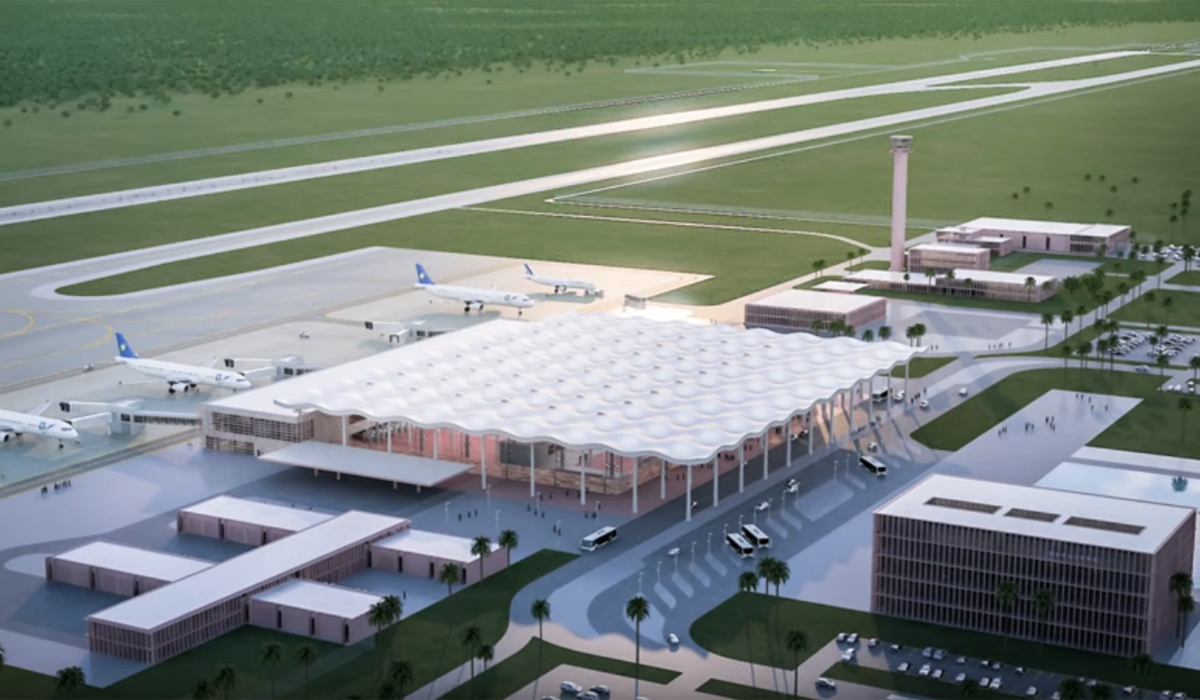Project Overview
- Total investment: $2 billion
- Qatar Airways holds 60% stake; Rwanda retains 40%
- Government equity (~$800 million) likely funded through concessional loans and domestic revenue
- Construction began: August 2017
- Phase I launch: mid-2028; Phase II by 2032
Design, Capacity & Infrastructure
Phase I Highlights
- Runway: 3,750–4,200 m, parallel taxiway
- 130,000 m² terminal, presidential pavilion, cargo and service facilities
- Cargo capacity: 150,000 tonnes/year
- Passenger capacity: 7–8 million/year
Phase II Expansion
- Second runway and expanded terminal
- Capacity grows to 14 million passengers/year and 300,000 tonnes of cargo
A 14 km expressway will link Bugesera to Kigali city center, enhancing connectivity and reducing travel time.
Sustainability & Utilities
The airport will be powered by the Rusumo hydroelectric plant, supplying up to 80 MW. Design priorities include efficient lighting, smart grid technology, and green-building principles.
Financing & Budget Impact
- Rwf699 billion (~$499 million) allocated in Rwanda’s 2025/26 fiscal budget
- Airport accounts for 57% of the year’s budget increase
- IMF forecasts debt-to-GDP reaching ~86% by 2026
- $200 million loan sought from AIIB
- $84 million ATIDI guarantee enabled $322 million in regional financing
Strategic Rationale & Regional Outlook
- Relieves pressure on Kigali International Airport
- Boosts East Africa–Europe/Middle East transit
- Enhances Rwanda’s role in AfCFTA logistics through cargo and agro-export support
- Qatar Airways dual investment (airport + RwandAir) marks deep private-public synergy
Table
| Feature | Details |
|---|---|
| Total cost | ~$2 billion |
| Qatar Airways stake | 60% |
| Rwanda’s stake | ~40% (~$800m) |
| Phase I capacity | 7–8 million passengers/year |
| Cargo Phase I | 150,000 tonnes/year |
| Phase II capacity | 14 million passengers; 300,000 t cargo/year |
| Phase I launch | Mid-2028 |
| Energy source | Rusumo hydro plant (~26–80 MW) |
| 2025/26 Budget allocation | Rwf699bn (~$499m) |
| Debt-to-GDP projection | ~86% by 2026 |

Bugesera International Airport is central to Rwanda’s ambition to become an East African aviation and trade hub. Its phased execution and modern logistics infrastructure signal a major leap forward.
Still, fiscal pressure looms large. With debt nearing 86% of GDP by 2026, the government faces a delicate balancing act between growth and sustainability.
If managed well, Bugesera could redefine regional air transit, cargo networks, and Rwanda’s stature on the continental stage.
